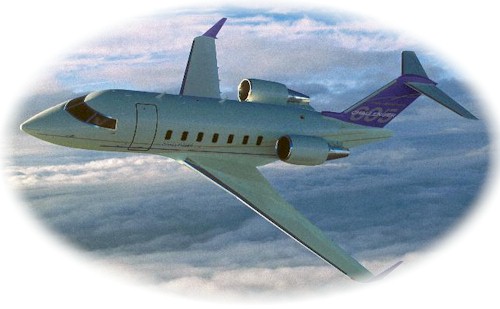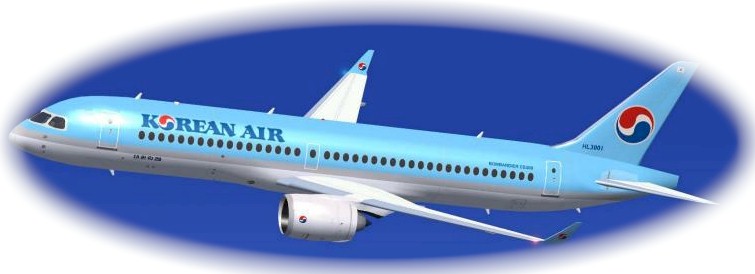Case-Bombardierís
Global Strategy
Montreal-based Bombardier
Inc. is a diversified Canadian company that specializes in transportation
solutions, from commercial and business jets to rail transportation equipment
and services. Bombardier was founded in 1942 to manufacture a now-classic
Canadian product-tracked vehicles for transportation across snow-covered
terrain. Many of the Bombardier snowmobiles that were manufactured decades
ago can still be seen in various areas of Canada. One such half-track sits
on the windswept shores of Yathkyed Lake in Nunavut, hundreds of kilometers
from any town. It is a mute remainder of the important role Bombardier
played in opening up Canadaís remote North.
Bombardierís headquarters
are in Montreal, but its employees also work in the
-
United States,
-
Mexico,
-
Europe and the
-
Middle East.
More than 90 percent of company
revenues come from outside Canada. Bombardierís strategy is to achieve
accelerated growth in foreign markets, so it is continually refining its
strategy to find new business opportunities in global markets.
Bombardier has historically
been very successful in the commercial airplane market with its regional
jets, which seat 50-90 passengers.

But competition is fierce.
In the mid-1990s, Bombardier held two-thirds of the market; then Brazilian
rival Embraer entered the market and became a strong competitor. In 2007,
Embraer finally overtook Bombardier to become the market leader in regional
jets. Along the way, Bombardier had complained to the World Trade Organization
that the Brazilian government was unfairly subsidizing Embraer by giving
it large sums of money. But the Canadian government was also giving loans
to Bombardierís customers to help them purchase Bombardierís planes.
Irrespective of how the competitive
wars in the regional jet market turn out, in inescapable fact is that the
regional jet market is declining because airline companies want jets with
longer ranges, lower operating costs, and wider cabins. Bombardier planners
reasoned that if they did not develop a new jet, they would gradually be
forced out of the commercial airline business. In 2008, at the famous Farnborough
International Airshow near London, England, the company announced that
it would go ahead with its new transcontinental CSeries commercial jet,
a plane that will seat 110-130 passengers and which is designed for transcontinental
flights. The plane will be more fuel efficient than current models and
much quieter due to technological improvements in the new engines, Bombardier
also announced that Deusche Lufthansa AG had signed a letter of intent
(LOI) for 30 of the planes, as well as an option for 30 more. As of November
2010, Bombardier had recorded firm offers for 90 CSeries aircraft

a C-series Bombardier plane
used by Korean Air
and options from Lufthansa,
Lease Corporation International Group, and Republic Airways. Qatar Airways
has also expressed strong interest in the plane.
The introduction of the CSeries
aircraft means Bombardier will be going head to head with global giants
Airbus and Boeing. That strategy is risky, but if it succeeds, it will
mean huge sales revenues and profits for Bombardier. It will also mean
that Canada is one of only three countries in the world that produce intercontinental
commercial jet aircraft. Market research suggests that the market for commercial
jets like the CSeries will be 5000-6000 units over the next 20 years, and
Bombardier hopes to get 50 percent of that market. The price of each plane
is about $56 million, so if the company achieves its market share goal,
it could receive approximately $190 billion in revenues over the next 20
years.
That sounds impressive, but
there are three areas of risk associated with Bombardierís strategy.
-
First, there may (or not) be
competing products from other airplane manufacturers. Here, Bombardier
may get lucky. There is little evidence that Airbus or Boeing is planning
to develop a plane that will compete directly with the CSeries aircraft.
Thatís because there are large order backlogs (four to five years) for
both the Airbus A320 and the Boeing 737, and the companies are fully engaged
trying to fill those orders. However, Embraer may be developing a jet to
compete with the CSeries aircraft.
-
Second, there is some risk associated
with the Canadian government. In the past, the federal government has loaned
money to Bombardierís customers so they can purchase the planes and trains
the company manufactures. But will the government decide to stop handing
out money? When he was opposition leader, Stephen Harper said he wanted
to end this type of support to private-sector companies, but as prime minister,
he has now reversed his position. Industry Minister Jim Prentice says that
Canada wants to maintain its position as a global supplier in the airplane
business. The Liberal industry critic, Scott Brison, says the Canadian
government doesnít have an industrial strategy and is just making ad hoc
decisions based on which way the political winds are blowing. But given
the uncertain economic times, it appears that government loans are likely
to continue.
-
Third, there is a risk that
Boeing, Airbus, and Embraer will argue at the World Trade Organization
( witiger.com/internationalbusiness/wto.htm
)that Canada is illegally subsidizing
Bombardier. There is a long and contentious history between Bombardier
and Emgraer about government subsidies, and each company has claimed at
various times in the past that the other is being illegally subsidized
by the government. The outcome of any legal action by other airplane manufacturers
against Bombardier is very uncertain.
Bombardierís strategy
also includes shifting some of the risk of the CSeries aircraft to suppliers
and to government. The overall development cost and capital investment
of the CSeries aircraft program are projected to total $3.4 billion, including
$700 million in capital expenditures and $1.3 billion in non-recurring
costs. The remaining $1.4 billion in CSeries aircraft program costs will
be split between the government of Canada, the province of Quebec, the
government of the United Kingdom (where the wings of the CSeries aircraft
will be built), and suppliers. The various governments will be paid a royalty
on each plane that is sold. The project will create 3500 high-paying jobs
in Quebec and about 800 jobs in the United Kingdom.
Ebert, Ronald J., et al.
Business Essentials. 5th Canadian ed. Toronto: Pearson Canada, 2012. Print.
additional information
Toronto Star story March
7th 2013
http://www.thestar.com/business/2013/03/07/bombardier_shows_off_new_cseries_plane.html

